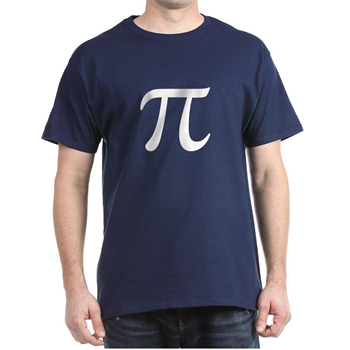 What’s Pi Day all About?
What’s Pi Day all About?
When my son was a kindergartner I first heard about Pi Day. The kids at his school competed to recite the most numerals of Pi formula from memory, spelling bee style, with students as young as six showing some amazing recall abilities of up to 30 digits without flubbing.
Just like any good holiday or observance, the marketers have gotten a hold of it to make it into a commercial event. As a blogger, this week I was bombarded with dozens of pitches from bakeries, pizza parlors, frozen pie and pizza companies, Pi day merchandisers for T-shirts, mugs and the like, and even LACTAID got into it, promoting dairy-free pie recipes (and LACTAID tablets for the lactose intolerant who can’t avoid dairy) for Pi Day.
Before we lose the meaning of Pi Day, and it becomes a national day of eating pies and buying stuff, here’s the true meaning of Pi Day, in case anyone wants to use the occasion to learn about Pi on March 14, when Pi Day was founded in 1988 by a physicist at the Exploratorium in San Francisco, who decided that he and his colleagues should celebrate the day and promote learning science and math.
LEARN ABOUT PI
HISTORY OF PI
By measuring circular objects, it has always turned out that a circle is a little more than 3 times its width around. In the Old Testament of the Bible (1 Kings 7:23), a circular pool is referred to as being 30 cubits around, and 10 cubits across. The mathematician Archimedes used polygons with many sides to approximate circles and determined that Pi was approximately 22/7. The symbol (Greek letter “π”) was first used in 1706 by William Jones. A ‘p’ was chosen for ‘perimeter’ of circles, and the use of π became popular after it was adopted by the Swiss mathematician Leonhard Euler in 1737. In recent years, Pi has been calculated to over one trillion digits past its decimal. Only 39 digits past the decimal are needed to accurately calculate the spherical volume of our entire universe, but because of Pi’s infinite & patternless nature, it’s a fun challenge to memorize, and to computationally calculate more and more digits.
GEOMETRY
The number pi is extremely useful when solving geometry problems involving circles. Here are some examples:
The area of a circle.
A = πr2
Where ‘r’ is the radius (distance from the center to the edge of the circle). Also, this formula is the origin of the joke “Pies aren’t square, they’re round!”
The volume of a cylinder.
V = πr2h
To find the volume of a rectangular prism, you calculate length × width × height. In that case, length × width is the area of one side (the base), which is then multiplied by the height of the prism. Similarly, to find the volume of a cylinder, you calculate the area of the base (the area of the circle), then multiply that by the height (h) of the cylinder.






